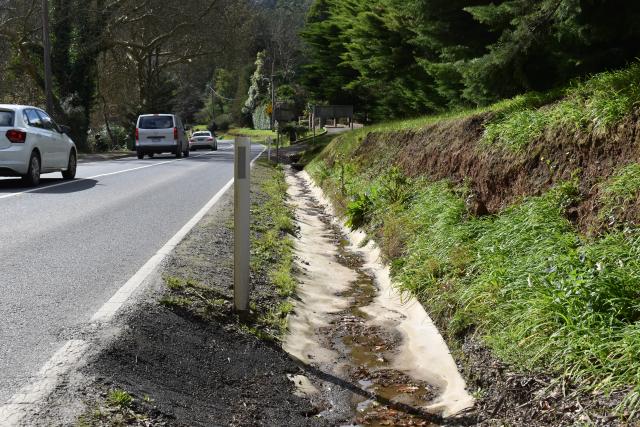After a two week deferral, Yarra Ranges Council adopted its Stormwater Policy and Stormwater Management Plan despite renewed calls for improvements from the community.
Speaking in objection to the plan’s adoption, Kallista resident and floodwatch group member Karen Kestigian said a flood mitigation maintenance plan was required more immediately than the 10 year stormwater plan.
“The plan ascribes 10 years to plot and gather data. For the established communities flood mitigation is needed now,” she said.
“Shire communities include urbanised centres, villages, business precincts and rural locations. Increased storm events emphasise inefficient drainage systems in these communities. Current maintenance does not remediate frequent inundation and flash flooding events.”
Ms Kestigian said given the heightened effects of climate change and reoccurring flood events, “a proactive, stronger and more resilient” maintenance program was required especially during the months of August to March.
The pressure of the housing targets and the previous 20 years of building in the urban areas of Lilydale, Mooroolbark and Chirnside Park, Ms Kestigian said made the stormwater maintenance and infrastructure even more of a requirement now than ever before.
Ms Kestigian said the domino effect of flooding leads to or enhances the impacts of “slippage, erosion, inaccessibility, flooding impacts, insurance premiums, unsealed roads and safety implications”.
“The maintenance levels of a decade ago no longer apply. We appeal to the Yarra Ranges Council to endorse and commit, with a sense of urgency, to a Flood Mitigation Maintenance Plan that offsets the delivery period of the Stormwater Management Plan.”
When asked by Councillor Andrew Fullagar whether in essence she and the floodwatch groups supported the stormwater plan, Ms Kestigian said they do and were realistic about the forward planning required to improve infrastructure but in the immediate future, actions needed to be taken.
“We do support the plan, but where we see the big gap is the 10 years and what’s going to happen to us, and we really need a more efficient way of dealing with the flooding.
“The flooding is getting worse. Climate change is real, and these sort of flooding events, we’re talking about 40 houses at a time or more in each area. This is not right, and people are suffering, and we need to help them, and we need a plan to do that.
“We go into these huge storm events and the drains are full, the drains haven’t been cleaned. The culverts are full. They’ve been rotting away. They cave in…there’s got to be a better way of maintaining what we’ve got now.”
Cr Fiona McAllister asked a number of questions to the executive around maintenance, the budget allocations for drainage works and projected timelines for the stormwater plan.
“The life of the plan is set at 10 years, as a suitable amount of time to deal with some really foundational pieces of work,” Built environment and infrastructure director Hjalmar Philipp said.
“First and foremost, the flood mapping that underpins a lot of the catchment scale plans is being undertaken over the next two years through a current arrangement with Melbourne Water.”
Mr Philipp said as with all 10 year plans, different timeline targets were estimated for the different actions which will either take two or four years.
Moving the recommended motion to adopt the plan, Cr Tim Heenan was seconded by Cr Fullagar.
“[The] council has obviously not lifted their game in the past, but they are now, and I believe going forward, we have an opportunity to get it right with all the proper plans in place,” Cr Heenan said.
“This stormwater management plan is an overarching plan that sets the direction and key actions that puts the right foundations and information in place for comprehensive and up to date stormwater management.
“The plan is not about making decisions about specific projects. The plan focuses on balancing flood protection with the preservation of natural waterways, considering the impacts of urban development and climate change.”
Cr Heenan said “we have many millions of dollars in this, and following years, many millions more than what we’ve had ever in the time I’ve been on council” to conduct the drainage maintenance and to establish the appropriate mitigation measures.
Acknowledging that this was the “blueprint to start the process” Cr Heenan said the work was only just beginning but that the council “absolutely turned the corner in the last 10, 11 months”.
Cr McAllister reiterated that this plan was a “critical step forward for us as a municipality” but as the plan progresses, she would like to see the clarity and communication remain particularly over the 10 year timeframe.
“We are looking at a 10 year time frame. I appreciate that it’s a very difficult thing sometimes for us to articulate in simple ways. But I guess that’s my ask of all of us that we do find a way to give greater clarity about the plan of action and what to be expected on an individual road,” she said.
“Every time it rains, it induces trauma yet again and apart from investing money to try and get ahead of the game and fix the issues that are occurring, how do we find ways to communicate in simpler or clearer ways about the work that is planned and going to happen.”
The adoption of the plan was passed unanimously.







